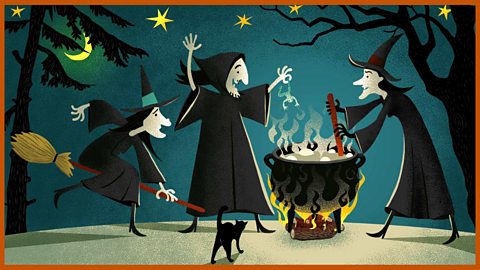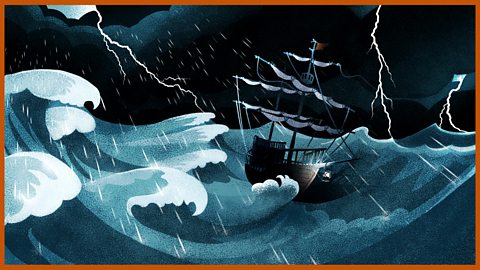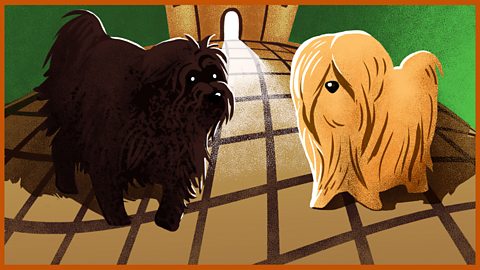King Lear: A Tragedy in 5 Acts written by Andy Stanton and read by Simon Callow.
Synopsis
Fun and irreverent, Andy Stantonâs retelling of King Lear centres on Lear and his daughters, with many secondary characters in Shakespeareâs complex original not making an appearance. The story retains the (almost pantomime) nastiness of the two wicked sisters and the return of good daughter Cordelia, but there is plenty of modern dialogue and silly humour. Lear ultimately asks whether he can jump ship to another Shakespeare play with a happier ending. His choices (Macbeth, Hamlet and Romeo and Juliet) are no happier than his own story, and when he finally asks if he can be transported to a comedy, Cordelia tells him that both he and she have died âtwo minutes agoâ, leading Lear to sigh that âitâs been an absolutely terrible day.â

Ìę
Ìę
Ideas for use in the classroom
Wanted Posters
Children could create âWantedâ posters for the evil Goneril and Regan complete with artistsâ impressions of the wicked duo.They could also create a âMissingâ poster for Lear. This could be particularly fun as they could include some of the hilarious depictions of Learâs antics (pineapple eating, ceremonial nose-wearing etc.) in their descriptions and illustrations. They could also include details of his last known whereabouts (in a shack made of peasantâs hair etc.).
Shakespearean chat show
The dysfunctional family of King Lear would be incredible guests on a tabloid talk show. In groups of five, children could play the talk show host, Lear and his three daughters, who should be invited on to the show one by one. Before devising their dramas, mind map the questions they might ask, such as:
- Cordelia: why did you not tell your father how much you loved him?
- Goneril: why didnât you let your dad stay with you after he gave you half his kingdom?
- Lear: what did you think when you realised your two daughters were only after your money?
It might also be wise to share a simplified version of the original Shakespeare tale (as per the summary in these teachersâ notes) with children to develop in depth questions for the characters.
Computing/music
At the centre of the story of Lear is the terrible storm through which Lear rages in his madness. Children could use a combination of percussion instruments and computer software, websites and apps, including sound effects such as those found at: to create, record, refine and edit compositions based on a Learâs storm. They could write their own descriptions of the storm and record themselves reading these, editing their own voices into their âstormâ compositions using editing software.
History/English/R.E. - Shakespeare's sources
Shakespeare usually used a number of historical sources when writing his plays. One interesting source for primary aged children is the Indian folk story or fairy tale called âLove Like Saltâ or âWater and Saltâ which features a king and his daughters. The youngest, and favourite, daughter, says that she loves her father like water and salt â meaning that she needs his love to live â but he is unimpressed with her response, compared with those of her sisters, and sentences her to death. The story can be found for free online and could be used in the study of morality stories from other cultures in addition to providing an interesting comparison/companion piece to Lear.

Ìę
Ìę
More from this series
Macdeath. audio
A story inspired by Macbeth, written by Pamela Butchart and read by Shirley Henderson

The Tempest: The Isle of Noises. audio
A Frank Cottrell-Boyce story inspired by The Tempest. Read by Julian Rhind-Tutt.

The Taming of the Kat Dog. audio
A Gareth P Jones story inspired by The Taming of the Shrew. Read by Verity-May Henry.
